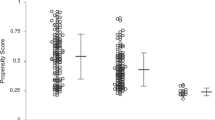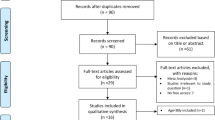Abstract
The objective of the study was to examine medically managed secondary prevention at one year after coronary artery bypass grafting (CABG). In all, 214 consecutive patients undergoing isolated elective CABG seen four weeks preoperatively and one year post-operatively. Preoperative systolic blood pressure averaged 135±20 mmHg, which increased to 148±25 mmHg (P<0.0001) as did diastolic pressure (81±12 to 87±13 mmHg; P<0.0001). Anginal symptoms were reported by 45.1% (P<0.0001) although median severity scored lower (4.0 [3.0–5.4] vs 0 [0–2.0]; P<0.0001). Breathlessness decreased from 93% to 64% (P<0.0001) and was scored less severely (4.0 [2.0–5.0] vs 2.0 [0–4.0]; P<0.0001. In all, 88% with postoperative angina reported dyspnoea against 44% of those without (P<0.0001). Calcium antagonist use was more common in patients with angina (27.2% vs 5.1%; P<0.0001), but not nitrates (P=0.8695), diuretics (P=0.4218), digoxin (P=0.2565), β-blockers (P=0.0820), or ACE inhibitors (P=0.7256). Preoperatively 166 patients (80.2%) took aspirin vs 69.2% afterwards (P=0.0131). Twelve patients (6.5%) received warfarin after operation vs none preoperatively. Two took digoxin (0.97%) preoperatively and 14 (7.7%) postoperatively (P=0.001) for chronic atrial fibrillation. One of these took warfarin. Long-acting nitrate use fell from 63.4% to 15.8% (P <0.0001). Short-acting nitrate use fell similarly (P<0.0001). Preoperatively 37 patients (17.9%) took ACE inhibitors vs 44 postoperatively (24.2%); 39 had not received them before. Preoperatively 48 (23.2%) took diuretics vs 30 (16.5%) postoperatively (P=0.127); 24 had not previously taken diuretics. More patients took HMGCoA inhibitors postoperatively (P=0.0068) and total cholesterol was significantly reduced with a concomitant increase in HDL fraction. Smoking habit was virtually unchanged from 17.8% to 15.1% (P=0.5023). In conclusion: angina was common. Apart from statin prescribing, postoperative secondary prevention measures were poorly applied, less widespread and less effective than preoperatively. The implications are disturbing.
This is a preview of subscription content, access via your institution
Access options
Subscribe to this journal
Receive 12 digital issues and online access to articles
$119.00 per year
only $9.92 per issue
Buy this article
- Purchase on Springer Link
- Instant access to full article PDF
Prices may be subject to local taxes which are calculated during checkout


Similar content being viewed by others
References
Lindsay GM, Smith LN, Hanlon P, Wheatley DJ . The influence of general health status and social support on symptomatic outcome following coronary artery bypass grafting Heart 2001 85: 80–86
National Institute of Health Consensus. Development Conference Statement: coronary artery bypass surgery: scientific and clinical aspects N Engl J Med 1981 304: 680–684
Sever P et al. Management guidelines in essential hypertension: report of the second working party of the British Hypertension Society Br Med J 1993 306: 983–987
Ramsay LE et al. British Hypertension Society guidelines for hypertension management 1999: summary Br Med J 1999 319: 630–635
Herlitz J et al. Mortality, risk indicators, mode and place of death and symptoms of angina pectoris in the five years after coronary bypass grafting in patients with and without a history of hypertension Blood Press 1999 8: 200–206
Sjoland H et al. Improvement in various estimates of quality of life after coronary artery bypass grafting in patients with and without a history of hypertension J Hypertens 1997 15: 1033–1039
Kee KA, Kieckhefer GM . Measuring human responses using visual analog scales Western J Nurs Res 1989 11: 128–132
Campeau L . Grading of angina pectoris [Letter] Circulation 1975 52: 522
Criteria Committee for the New York Heart Association. Nomenclature and Criteria for Diagnosis of Diseases of the Heart and Blood Vessels 7th Edn Little Brown and Company: Boston 1974
Castelli WP . Epidemiology of coronary heart disease: the Framingham study Am J Med 1984 76: (Suppl 2A) 4–12
CABRI Trial. Participants first-year results of CABRI (Coronary Angioplasty vs Bypass Revascularisation Investigation) Lancet 1995 346: 1179–1184
Pocock SJ et al. Quality of life, employment status, and anginal symptoms after coronary angioplasty or bypass surgery. 3-year follow-up in the Randomized Intervention Treatment of Angina (RITA) Trial Circulation 1996 94: 135–142
Shaper AG et al. Risk factors for ischaemic heart disease: the prospective phase of the British Regional Heart Study J Epidemiol Commun Health 1985 39: 197–209
Wiklund I, Halling K, Ryden-Bergsten T, Fletcher A . Does lowering the blood pressure improve the mood? Quality-of-life results from the Hypertension Optimal Treatment (HOT) study Blood Press 1997 6: 357–364
Collins R et al. Blood pressure, stroke, and coronary heart disease. Part 2, Short-term reductions in blood pressure: overview of randomised drug trials in their epidemiological context Lancet 1990 335: 827–838
Hansson L et al. Effects of intensive blood-pressure lowering and low-dose aspirin in patients with hypertension: principal results of the Hypertension Optimal Treatment (HOT) randomised trial. HOT Study Group Lancet 1998 351: 1755–1762
Zabalgoitia M et al. Effect of regression of left ventricular hypertrophy from systemic hypertension on systolic function assessed by midwall shortening (HOT echocardiographic study) Am J Cardiol 2001 88: 521–525
Enbergs A et al. Secondary prevention of coronary heart disease: ideal versus reality in the Munster EURASPIRE study population Z Kardiol 1997 86: 284–291
Brady AJB, Oliver MA, Pittard JB . Secondary prevention in 24,431 patients with coronary heart disease: survey in primary care Br Med J 2001 322: 1463
Stroke Prevention in Atrial Fibrillation Investigators. Warfarin versus aspirin for prevention of thrombo-embolism in atrial fibrillation: stroke prevention in atrial fibrillation II study Lancet 1994 343: 687–691
Atrial Fibrillation Investigators. Risk factors for stroke and efficacy of antithrombotic therapy in atrial fibrillation. Analysis of pooled data from five randomized controlled trials Arch Intern Med 1994 154: 1449–1457
Scandinavian Simvastatin Survival Group. Randomised trial of cholesterol lowering in 4444 patients with coronary heart disease: the Scandinavian Simvastatin Survival Study (4S) Lancet 1994 344: 1383–1389
Brown WV . Cholesterol lowering in atherosclerosis Am J Cardiol 2000 86: (4B) 29H–32H
Koh KK et al. Non-lipid effects of statin on hyper-cholesterolemic patients established to have coronary artery disease who remained hypercholesterolemic while eating a step-II diet Coronary Artery Dis 2001 12: 305–311
Flaker GC et al. Pravastatin prevents clinical events in revascularised patients with average cholesterol concentrations. Cholesterol and Recurrent Events CARE Investigators J Am Coll Cardiol 1999 34: 106–112
Cook DG, Shaper AG . Breathlessness, angina pectoris and coronary artery disease Am J Cardiol 1989 63: 921–924
Oparil S et al. Efficacy, tolerability, and effects on quality of life of losartan, alone or with hydrochloro-thiazide, versus amlodipine, alone or with hydrochloro-thiazide, in patients with essential hypertension Clin Ther 1996 18: 608–625
Skinner JS et al. Patient-related outcomes five years after coronary artery bypass graft surgery Q J Med 1999 92: 87–96
Delacretaz E et al. Secondary prevention of ischemic heart disease after coronary revascularization Schweiz Runsch Med Prax 1998 87: 1497–1503
Oldenburg B, Pierce J, Sicree R, Ross D . Coronary risk factor outcomes following coronary artery bypass surgery Aust NZ J Med 1989 19: 234–240
McHugh F et al. Nurse-led shared care for patients on the waiting list for CABG: a randomised controlled trial Heart 2001 86: 317–323
Campbell NC et al. Secondary prevention in coronary heart disease: a randomised trial of nurse led clinics in primary care Heart 1998 80: 447–452
Author information
Authors and Affiliations
Corresponding author
Rights and permissions
About this article
Cite this article
Belcher, P., Gaw, A., Cooper, M. et al. Are we negating the benefits of CABG by forgetting secondary prevention?. J Hum Hypertens 16, 691–697 (2002). https://doi.org/10.1038/sj.jhh.1001469
Received:
Revised:
Accepted:
Published:
Issue Date:
DOI: https://doi.org/10.1038/sj.jhh.1001469
Keywords
This article is cited by
-
Secondary revascularization after CABG surgery
Nature Reviews Cardiology (2012)



